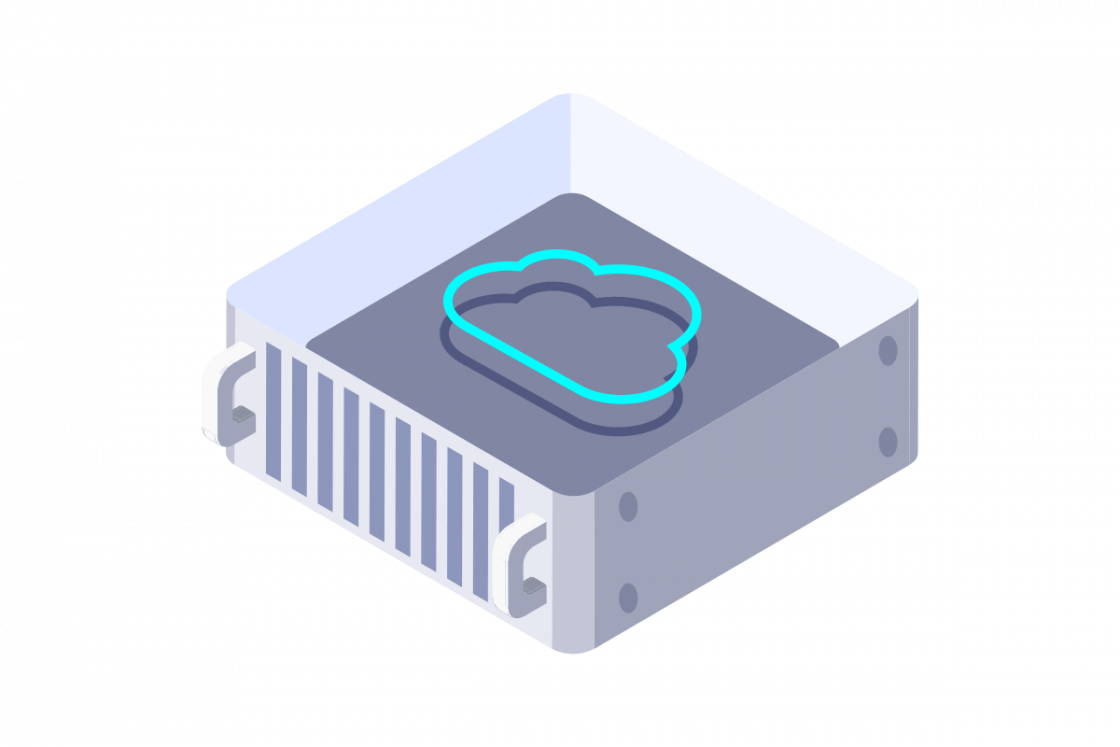What is Network Connectivity?
Network connectivity refers to the ability of internet devices, systems, and applications to communicate and exchange information. This connection is established using various technologies and mediums, including wired and wireless connections, cellular networks, and satellite links.
Essentially, it's what allows your computer to access websites, your smartphone to send messages, and your business to operate efficiently in a global market.

Importance of Network Connectivity in Modern Business
Network connectivity for devices evolved from a convenient tool to a critical business necessity because most businesses now rely on countless internet devices. Organizations of all sizes rely heavily on robust network infrastructure to:
- Facilitate efficient communication: Email, instant messaging, video conferencing, and other communication tools rely on network connectivity to enable seamless collaboration between employees, partners, and customers – all regardless of location.
- Streamline business operations: From accessing cloud-based applications and sharing files to managing supply chains and processing transactions, businesses depend on network connectivity to streamline their operations and improve productivity.
- Enhance customer experience: In the digital age, customers expect instant access to information and services. Strong network connectivity ensures a seamless online experience, whether it's browsing a website, making an online purchase, or accessing customer support.
- Drive innovation: Network connectivity is fundamental for emerging technologies like the Internet of Things (IoT), artificial intelligence (AI), and cloud computing. These technologies rely on seamless data exchange and communication to deliver innovative solutions and drive business growth.
Without reliable network connectivity, businesses face significant challenges in communication, productivity, and competitiveness. It’s the backbone of modern business operations, enabling growth, innovation, and success in the digital age.
Key Benefits of Reliable Network Connectivity
Reliable network connectivity for internet devices is the invisible force that drives efficiency, productivity, and innovation across all business sectors. Here are some of the key benefits it offers:
- Improved collaboration: Strong network connectivity is the cornerstone of effective communication. It enables seamless information exchange through various channels, such as email, instant messaging, and video conferencing. This fosters collaboration among employees, partners, and customers, regardless of their location.
- Enhanced speeds: Fast and efficient data transmission is crucial for businesses of all sizes. Reliable network connectivity ensures quick access to critical data and applications, leading to improved workflow and reduced downtime.
- Increased security: A robust network infrastructure is essential for maintaining data security and ensuring business continuity. Reliable connectivity allows for the implementation of strong security protocols, such as firewalls and intrusion detection systems.
How Network Connectivity Works
While we often take it for granted, network connectivity involves a complex interplay of technologies and processes working behind the scenes. Here's a simplified look at how it all comes together:
- Role of routers and switches: Routers and switches are the traffic controllers of the network world. They ensure that data packets reach their intended destinations efficiently and reliably. These devices direct connect different networks together, such as your home network to the internet.
- Data transmission: Data is transmitted across networks in small units called packets. Each packet contains a portion of the overall data, along with address information that guides it to its destination.
- Managing bandwidth and latency: Bandwidth refers to the capacity of a network connection, or how much data can be transmitted per second. Latency, on the other hand, refers to the delay in data transmission.
By effectively managing bandwidth and latency, network administrators can ensure smooth data flow, prevent bottlenecks, and deliver a seamless user experience.
Comparing Network Connectivity Options
Choosing the right network connectivity option depends on a variety of factors, including your specific needs, budget, and the environment of the internet devices used. Here's a comparison of some common options to help you make informed decisions:
- Wired vs. wireless connectivity: The age-old debate between wired and wireless connectivity continues, with each offering distinct advantages. Wired connections, such as Ethernet and fibre optic, generally provide faster speeds, lower latency, and stronger security. It’s ideal for applications that demand high performance and reliability and for things like IoT connectivity.
- Wireless connectivity service, primarily Wi-Fi: Offers convenience and freedom of movement, making it popular for homes, offices, and public spaces. While wireless speeds have improved significantly, they can still be affected by interference and may not match the raw speed of wired connections.
- Public vs. private networks: Public networks, like those found in coffee shops and airports, offer convenient internet access but come with security risks. Since these networks are open to anyone, your data can be vulnerable to interception and malicious attacks. Private networks, on the other hand, restrict access to authorized users.
- VPNs and secure connections: VPNs are secure connectivity solutions, encrypted tunnel over a public network, protecting your data from prying eyes. They are essential for remote workers, allowing them to securely access company resources and applications from anywhere. VPNs also mask your IP address, providing anonymity and privacy while browsing the internet.
Best Practices for Implementing Strong Network Connectivity
Building a robust and reliable network requires careful planning and adherence to best practices. Here are a few key considerations for implementing strong network connectivity.
Selecting Appropriate Infrastructure
Choosing the right network infrastructure is crucial for ensuring optimal service performance and scalability for every device. This involves selecting appropriate networking hardware, such as routers, switches, and cables, based on your specific needs and budget.
Consider factors like network speed, capacity, and security requirements when making your selections. For example, a small business might opt for a basic router and standard Ethernet cables, while a large enterprise might require high-performance switches and fiber optic connections.
Also consider the physical layout of your network and the distances between devices. Wireless access points should be strategically placed to provide adequate coverage, while wired connections should be planned to minimize cable lengths and avoid potential interference.
Use Powerful Security Tools
Network security is paramount in today's threat landscape. Implement strong security protocols to protect your network from unauthorized access and a cyberattack.
This includes configuring firewalls to block unwanted traffic, implementing intrusion detection systems to identify suspicious activity, and using strong passwords and encryption to safeguard sensitive data.
Regularly update your network devices used with the latest security patches to address vulnerabilities and protect against emerging threats. Educate users about network security best practices, such as recognizing phishing scams and avoiding suspicious websites.
Optimizing for Scalability and Growth
Design your network with future growth in mind. Choose scalable cloud and multi-cloud networking for cloud solutions that can accommodate increasing bandwidth demands and the addition of new devices. Consider implementing network monitoring tools to track performance and identify potential bottlenecks.
This allows you to proactively address issues and optimize your network for optimal efficiency. Plan for redundancy and failover mechanisms to ensure business continuity in case of unexpected disruptions. This might involve using backup internet connections or implementing redundant network devices to minimize downtime.
By following these best practices, you can build a strong and reliable network that supports your business needs and data centre networking and provides a secure and efficient platform for communication and collaboration – and for digital transformation.
Common Challenges in Network Connectivity
While network connectivity has become essential for modern life, it's not without its challenges. Here are some common obstacles and how to address them:
Addressing Network Downtime
Network service downtime, whether planned or unplanned, can disrupt operations, hinder productivity, and even lead to financial losses.
To minimize downtime for each and every device, proactive measures are a must. This includes regular maintenance of network equipment, implementing redundant systems and backup connections, and having a well-defined incident response plan to quickly address outages. Investing in reliable network monitoring tools can help identify potential issues before they escalate into major problems.
Overcoming Connectivity Bottlenecks
Network bottlenecks occur when certain points in the network experience congestion, slowing down data flow and affecting overall performance. Identifying and addressing these bottlenecks is essential for maintaining optimal network speed and efficiency.
This often involves analyzing network traffic patterns, upgrading bandwidth capacity where needed, and optimizing network configurations to distribute traffic more effectively.
Enforce Secure Data Transfers
Implement strong encryption protocols, such as VPNs and TLS/SSL, these are essential for protecting sensitive data during transmission.
Regularly updating security software and firmware on network devices helps to patch vulnerabilities and defend against malware and other attacks.
Educating users about device security best practices, such as recognizing phishing attempts and using strong passwords, is crucial for creating a security-conscious culture. Implementing multi-factor authentication adds an extra layer of protection, making it more difficult for unauthorized users to access the network.
Discover Our Network Connectivity Solutions
Optimize your public cloud environment with OVHcloud's suite of robust networking services. Our solutions empower you to create secure, isolated networks, manage traffic flow, and ensure high availability for your applications. Explore the tools below to build a more resilient and efficient cloud infrastructure.

Private Network
With OVHcloud's Private Network, you can effortlessly establish a secure and isolated network environment within your public cloud infrastructure. This allows your resources, such as virtual machines and databases, to communicate with each other privately and securely, without traversing the public internet.

OVHcloud Gateway
Our Gateway service provides a secure and reliable entry point to your public cloud environment. It acts as a central hub for managing network traffic, allowing you to control inbound and outbound connections, implement security policies, and establish connections to other networks, including on-premises data centers.

Load Balancer
The Load Balancer service enables you to efficiently distribute incoming traffic across multiple servers or instances. This ensures high availability for your applications, prevents overload on individual resources, and optimizes performance for your users.